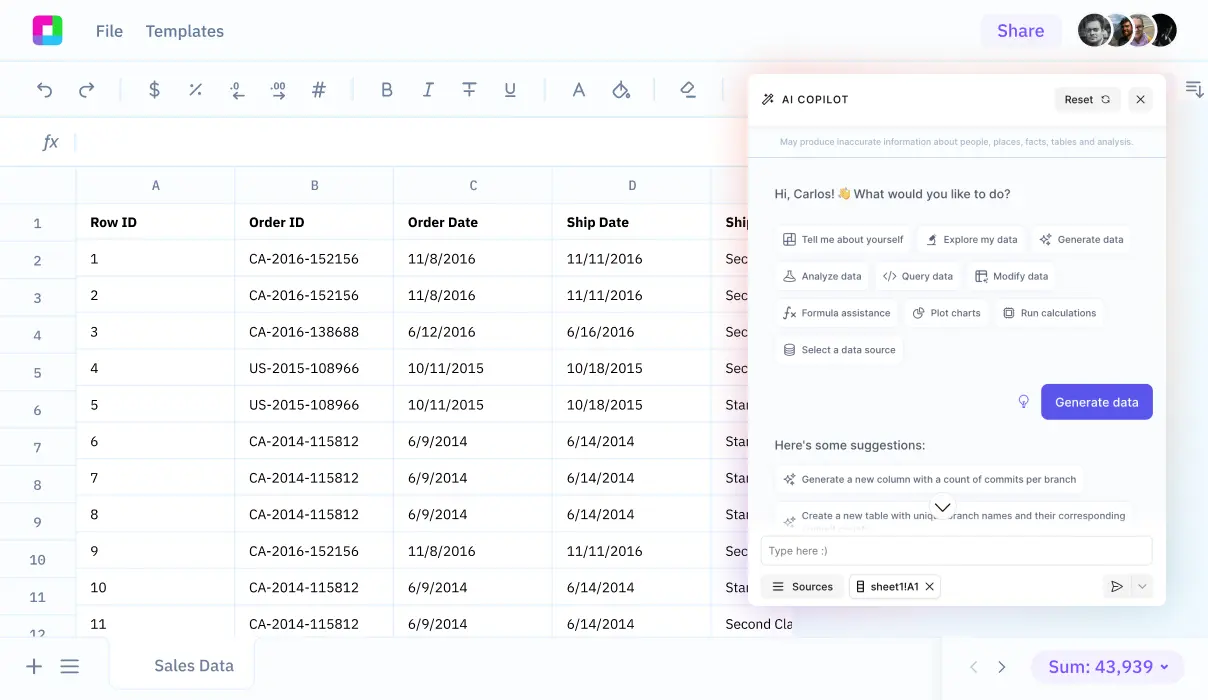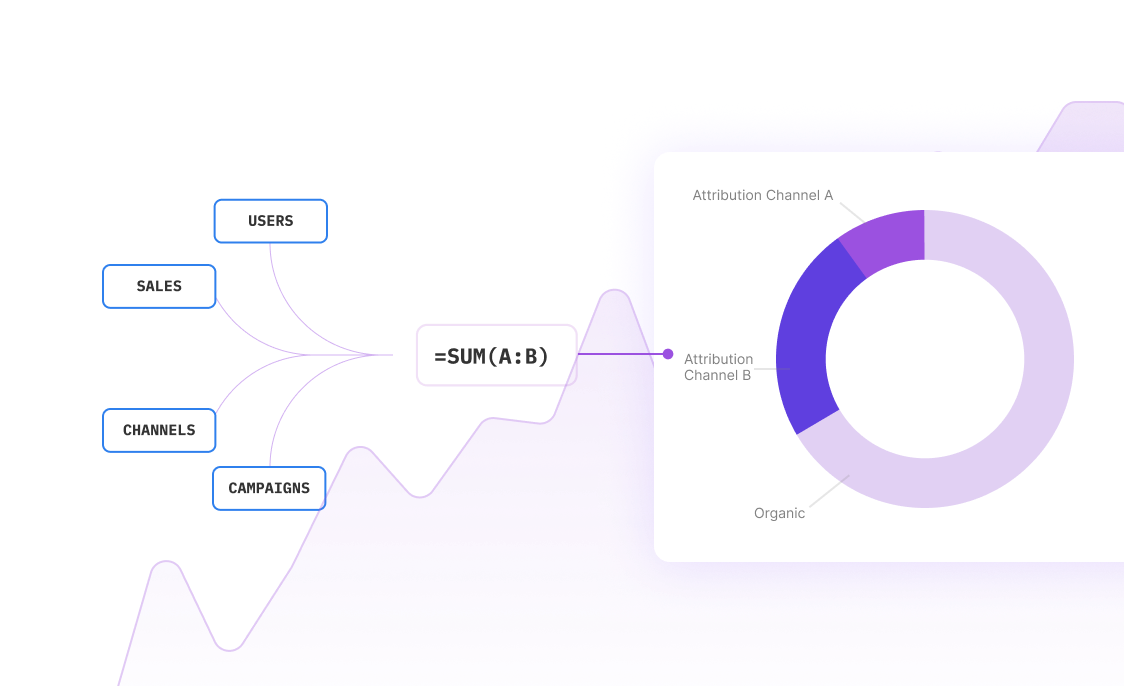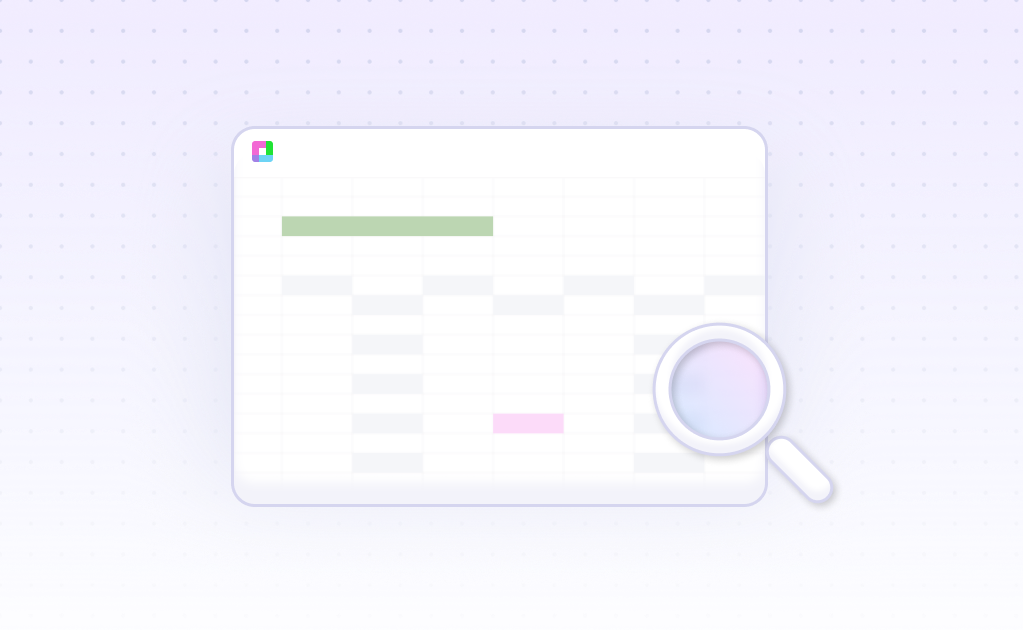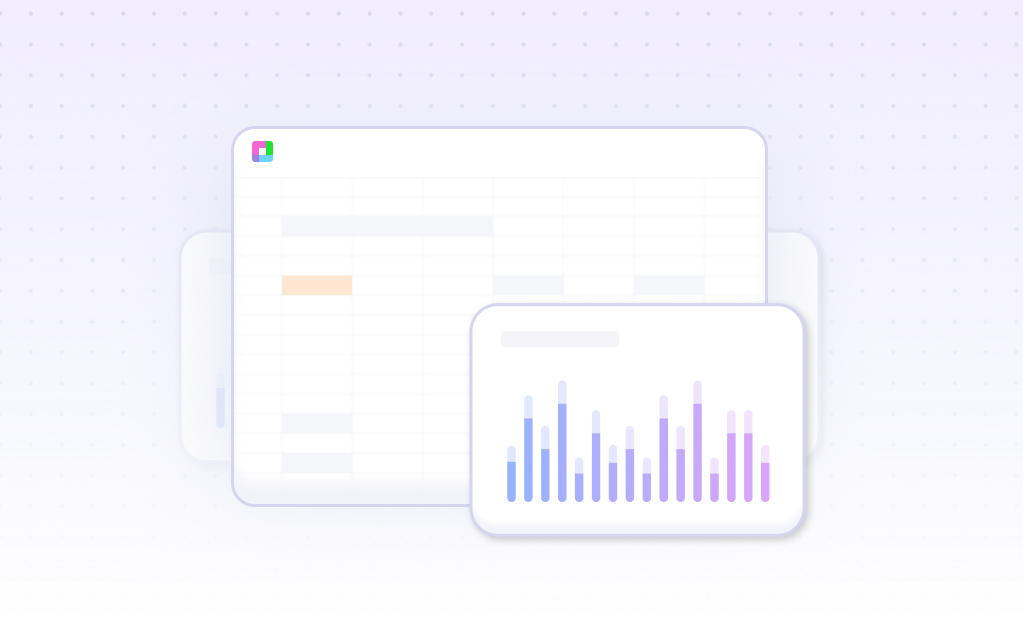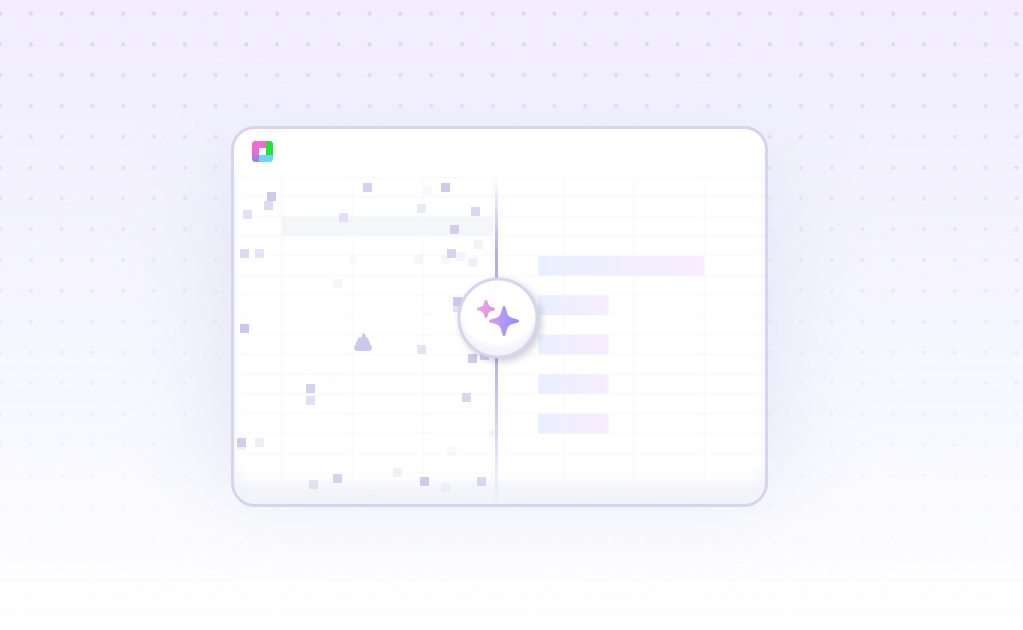
Introduction
Sensitivity and scenario analysis are essential tools for financial modeling and decision-making. In Excel, sensitivity analysis is performed through data tables, accessed via the Data tab's What-If Analysis or shortcuts Alt, D, T. This requires specific setup conditions: input variables and output on the same spreadsheet, hard-coded row and column numbers, and proper workbook calculation settings.
While traditional scenario planning tools like HighRadius offer AI-powered solutions for financial forecasting, Sourcetable provides a more accessible alternative. This AI-powered spreadsheet combines chatbot functionality with comprehensive data analysis capabilities, allowing users to clean data, run formulas, and create charts through natural language commands.
Learn how Sourcetable streamlines sensitivity and scenario analysis, eliminating the need for complex Excel setups while maintaining powerful analytical capabilities.
Why Sourcetable Is the Best Choice for Sensitivity and Scenario Analysis
Sourcetable revolutionizes sensitivity and scenario analysis through AI-powered automation and advanced data processing capabilities. Unlike Excel's recursive formulas for vendor optimization, Sourcetable streamlines the analysis process with historical data forecasting and comprehensive risk assessment tools.
Superior Decision Making
While Excel requires manual data entry and complex formula construction, Sourcetable's AI technology automatically identifies patterns, generates insights, and creates visualization. This automation enables more accurate decision-making and clear communication with upper management.
Enhanced Efficiency
Sourcetable eliminates the time-consuming aspects of traditional spreadsheet analysis. Its AI algorithms clean and validate data, automate repetitive tasks, and perform complex calculations with superior accuracy. This automation allows analysts to focus on value-added activities rather than manual data processing.
Risk Mitigation and Opportunity Identification
Sourcetable's advanced sensitivity analysis identifies both risks and opportunities through comprehensive data analysis. The platform leverages historical data for accurate forecasting, providing deeper insights than traditional Excel scenario planning.
Benefits of Sensitivity and Scenario Analysis with AI-Powered Spreadsheets
Sensitivity analysis enhances business communication by breaking complex models into clear insights for stakeholders. It verifies model integrity, identifies risks, and confirms key business drivers. The analysis strengthens scenario planning by highlighting critical factors that impact outcomes.
Scenario analysis enables strategic thinking and helps leaders anticipate opportunities and challenges. It improves resource allocation by revealing how external conditions affect operations. Through multiple future scenarios, organizations strengthen their risk management capabilities.
AI-Powered Analysis Benefits
AI-powered spreadsheet features enhance data analysis through natural language processing and automated calculations. Users can leverage AI to analyze data, add calculated columns, and get instant answers to business questions using plain language queries. The ASK_OPENAI formula enables direct AI integration for advanced analysis capabilities.
Types of Sensitivity and Scenario Analysis in Modern Spreadsheets
Financial analysts can perform comprehensive sensitivity analysis using modern AI-powered spreadsheets. These tools enable both non-parametric and linear sensitivity analysis while organizing data in labeled columns and tables for easier management.
Non-Parametric Analysis Options
Advanced spreadsheet platforms support backdoor, frontdoor, and instrumental variable (IV) sensitivity analyses. Users can employ non-parametric estimators from sklearn.ensemble with plugin_reisz parameters for testing model assumptions.
Linear Model Analysis
The platform enables sensitivity testing for linear estimators and partially linear models. Analysts can utilize the Refute method and conduct sensitivity analysis for unobserved confounding using partial R2 parameterization.
Scenario Management Features
Modern spreadsheet tools automatically generate reports, presentations, and visual charts from organized data tables. This functionality helps analysts test models across multiple scenarios and understand how output variables respond to input changes.
Benefits for Financial Modeling
These analysis capabilities enhance model credibility by enabling comprehensive testing across various possibilities. Analysts can make more informed decisions by understanding how different variables impact their financial models.
Sourcetable Use Cases for Sensitivity and Scenario Analysis
Sales Forecast Optimization |
Integrate sales data and use AI-powered scenario analysis to predict revenue outcomes across different market conditions. Customize formulas and reports to visualize how varying sales assumptions affect financial projections. |
Valuation Modeling |
Create dynamic company valuations that adjust based on changing market scenarios. Connect to multiple data sources to analyze how different assumptions impact key metrics like |
Marketing ROI Analysis |
Link marketing campaign data through software integrations to analyze spending scenarios. Generate sensitivity analysis reports showing how varying marketing budgets affect projected sales outcomes. |
Content Strategy Planning |
Connect SEO data sources to analyze content performance scenarios. Use customized reporting to model how different content strategies could impact organic traffic and conversion rates. |
Frequently Asked Questions
What is the difference between sensitivity analysis and scenario analysis?
Sensitivity analysis adjusts one variable at a time to assess individual impact and is best for short-term, focused risk assessment and operational decisions. Scenario analysis changes multiple variables simultaneously to evaluate potential outcomes and is better suited for long-term planning under uncertainty. Using both methods together provides a more comprehensive risk analysis.
How can I perform sensitivity analysis in a spreadsheet?
Sensitivity analysis can be performed using a data table by selecting two variables to analyze, defining the range of cells that include your formula and input values, and setting up the data table by specifying the row and column input cells. The data table will then show results for different combinations of the two variables.
What are the main use cases for scenario analysis?
Scenario analysis is used to capture and validate requirements, communicate complex ideas, identify potential issues early in development, and ensure systems meet user needs and business objectives. It provides a high-level view of system behavior and helps in making timely adjustments during development.
Conclusion
Sensitivity analysis in Excel requires precise setup through data tables, accessed via the Data tab or shortcuts Alt, D, T. The analysis demands input variables and output on the same spreadsheet, hard-coded row and column numbers, and related inputs and outputs. For accurate results, set "Workbook Calculation" to "Automatic except for data tables."
Scenario analysis expands beyond single variable changes, estimating portfolio value shifts across different situations. This mathematical approach computes varying reinvestment rates within investment horizons, though results depend heavily on analyst assumptions.
While Excel remains a standard tool, Sourcetable offers an AI-powered alternative that simplifies complex analysis. Its natural language processing chatbot and integration with over 100 data sources streamline formula creation, charting, and data manipulation. For efficient sensitivity and scenario analysis without Excel expertise, try Sourcetable at sourcetable.com/signup.
Recommended Analysis Guides
Connect your most-used data sources and tools to Sourcetable for seamless analysis.
Frequently Asked Questions
If you question is not covered here, you can contact our team.
Contact Us
